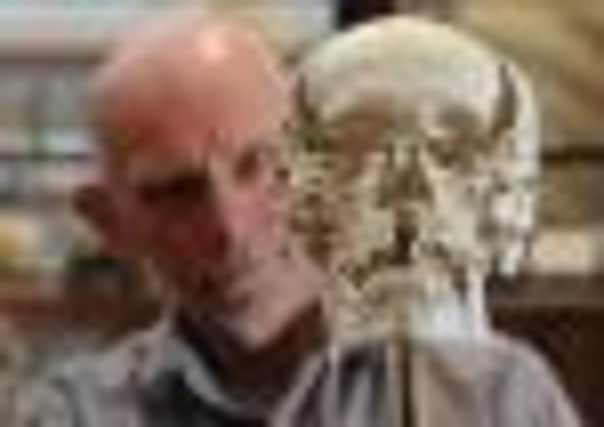Trip to the anatomy museum will show what you’re made of


When Dr Gordon Findlater opens the case for a closer look, the vibration sends Joseph’s skeleton leaping into action – if you count gently swinging and birling on a little hook that holds his frame in place “action”.
But he’s “poor” Bowed Joseph, not because of where he’s ended up – he’s actually one of the stars of a fascinating collection that makes up Edinburgh’s newest and oldest, museums. No, he’s “poor” because what finished off this lively, astonishing figure, crumpled by rickets but so powerful he could summon 10,000 city folks to rally by his side with just a few simple words, was the most ridiculous of accidents . . .
Advertisement
Hide AdAdvertisement
Hide Ad“Yes,” nods Dr Findlater, the enthusiastic director of anatomy who’s getting busy for today’s public opening of a museum that has educated students at the University for nearly 130 years. “It was unfortunate. Coming home from Leith Races, drunk, fell off the top of a stagecoach.”
A fairly inglorious end then, given Bowed Joseph’s remarkable life, one that saw this pitifully deformed Cowgate cobbler otherwise known as Joseph Smith, a man of immense charisma, become a man city folk relied upon to challenge authority and, more often than not, successfully argue their case.
His unfortunate death, in 1780, was mourned by all, so much so that the city magistrates announced “they’d never see his like again”.
Perhaps it was with the intention to, indeed, see him again, that his skeleton now graces the University’s Anatomy Museum, staring almost directly at none other than notorious murderer William Burke.
Dr Findlater agrees the infamous killer’s skeleton is likely to be a major draw for many who venture to the museum which, until now, has remained closed to all but university staff and students. But he’s eager to point out that the museum has a rich collection of fascinating exhibits – from animal skeletons which reveal curious links with our own to jars containing human body parts.
Take the towering pair of elephant skeletons in the wood panelled hall leading to the museum’s entrance. “You know,” says Dr Findlater, “their skeletons are just like ours, the only thing they don’t have is a clavicle.”
And above them, the giant jaw bones removed from a blue whale washed up on the beach at Longniddry in 1869, each weighing a tonne.
Advertisement
Hide AdAdvertisement
Hide AdA nearby case contains various pelvic bones, some with labels that tell sad stories of where they came from. In one case, 30-year-old Elizabeth Low, a mother-of-three, who died 20 hours after the birth of her fourth child after a Caesarean in September 1820.
“Osteomalacia of pregnancy,” Dr Findlater points out. “It’s a condition of the bones – her pelvis became far too small to deliver her child. She had to have a Caesarean but this was 1820 and she died. However, the child survived and was given the name Caesar Anna.”
While some of the exhibits require a strong constitution – a dissected hand, skin removed but with fingertips intact, samples of brain, a dissected and lacquered cadaver, and a foot that reveals tendons and bones – others simply fascinate. Such as Sir Walter Scott’s death mask, a cast of Robert Burns’ skull, the skeleton of a bat which Dr Findlater enthusiastically points out bears a quite remarkable if creepy similarity to a human skeleton, and a gorilla, hunched, hands trailing on the ground, impressive even without his muscle, flesh and beady eyes.
The decision to open the museum was, says Dr Findlater, a bid to “demystify anatomy” and satisfy the curiosity most of us have for the workings of the body: “We are fascinated with our own mortality. We want to see what goes on in the body and what happens when it goes wrong.
“But at the heart of the museum is respect for the body,” he stresses. “It is, above all, a place to learn and to understand.”
• The Anatomy Museum at Edinburgh University opens on the last Saturday of each month from today, between 10am and 4pm.